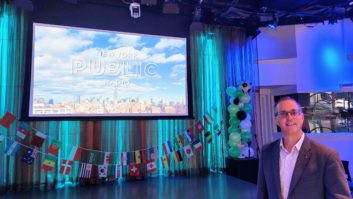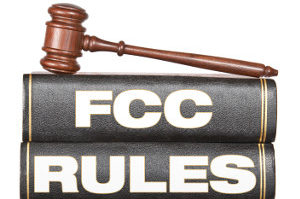WASHINGTON
Moving too slowly for some but not wanting to rush, Federal Emergency Management Agency officials believe the process to develop the next generation of the Emergency Alert System is on track. They expect to announce a position on adopting the Common Alerting Protocol by the end of July.
Many broadcasters and those in the emergency management arena are pushing FEMA to adopt CAP formally as the official data protocol for creating and sending emergency messages. The Federal Communications Commission has given its provisional endorsement of CAP.
However, the commission’s 2007 Second Report and Order on EAS stipulated that broadcasters would have 180 days to adopt whatever EAS protocol FEMA develops. It was unclear in June when that time window would begin, though EAS experts contacted by RW believe that deadline is far into the future.
Experts say CAP is just one of several concepts being considered by FEMA, but the most likely to be chosen.
An EAS “summit” hosted by the FCC in May left many in the broadcast community dissatisfied with FEMA’s progress and vociferous in urging that agency to move forward on EAS with purpose.
Monumental changes are coming to EAS, and FEMA officials say they are doing their best to assemble the multiple layers and parts, including cellular alerts via the Commercial Mobile Alert System, which also features FEMA in the prime development role.
Definitive steps
Despite the size of the undertaking, some in broadcasting say it is imperative that FEMA takes definitive steps this year towards CAP implementation.
“FEMA needs to lead or get out of the way,” said Art Botterell, an architect of CAP Version 1.1, which is already being used by some states for emergency warning.
“Regrettably, FEMA doesn’t appear to have anyone on staff who knows or cares about state or local warning. They have so far ignored the thousands of alerts everywhere from NOAA, AMBER and other local sources.”
Botterell, manager of a community warning system for the Sheriff’s Department of Contra Costa County in California, feels FEMA is too concentrated on a “doomsday national alert” scenario and is ignoring the wishes of state and local emergency managers.
He is recommending it implement CAP in two phases. A simple introduction of CAP-based messaging using the current EAS Specific Area Message Encoder (SAME) infrastructure should come first. “Then you incorporate all of the advanced features CAP messaging is capable of,” Botterell said.
FEMA says it is moving slowly so as to accommodate all elements of the new system and because it wants to develop an approach that really works. The goal is an inclusive, interoperable system, they say.
The Society of Broadcast Engineers has offered FEMA help, saying it is willing, if asked, to form working groups to develop a strategy to implement CAP.
Others within the EAS community believe FEMA is being “locked in” by policy battles that have resulted in no measurable progress in the advancement of public warning since 9/11.
“At this point I would be surprised to see any action from FEMA in implementing CAP within the next two years,” said Dale Gehman, president of Gehman Compliance and Consulting, a firm that specializes in emergency warning systems consulting.
PEP Station ExpansionFEMA has announced plans to expand the number of stations in the Primary Entry Point system from 34 to more than 60. PEP is the means by which the president could address the country during a national emergency.
“The move was necessitated by shifting demographics of the nation,” said Lance Craver, program manager of IPAWS. “We need to reach 85 percent of the nation’s population within 10 minutes for an Emergency Action Notification. FEMA is responsible for doing this. We will assemble the infrastructure to do that and states and locals can then use it as well.”
Craver said he expects to begin a two-year building plan to complete the expansion later this year.
FEMA also announced at the April NAB Show that Digital EAS, a network designed to deliver EANs via a digital data channel on PBS HDTV stations, eventually will be made available to individual states to distribute state emergency messages.Funding & training
Gary Timm, broadcast chair of the Wisconsin EAS Committee, said, “Next-gen EAS will require federal leadership, funding and training for emergency managers to properly originate CAP messages and for SECCs [State Emergency Communications Committees] to properly build new networks to distribute CAP alerts.”
FEMA, which has yet to release CAP-to-EAS specs, was designated as the lead federal agency by President Bush to develop new methodology for public warning in this country.
Specifically, FEMA’s Integrated Public Alert and Warning System is viewed as the integration vehicle to bring disparate warning systems under one protocol.
FEMA walks a delicate line of creating a framework that ensures a successful transition to the next generation of EAS, said Lance Craver, program manager of IPAWS.
“We continue to move forward on standardization. We have lots of moving parts with IPAWS. I need to build out the architecture, we need certification, we need to test it and we need grant funding,” he said.
FEMA managers view IPAWS as the national design for integrating all public warning assets. “It is the architecture that would enable competitive vendors to offer an interoperable interface to their products, which allows for them to be mixed and matched,” said one EAS expert.
FEMA’s goal is to take advantage of new technology that gives IPAWS the ability to generate public warnings on cell phones, pagers and computers.
In June, FEMA announced it would play the role of aggregator/gateway for commercial cellular alerts after earlier saying it lacked authority to do so.
“There are a whole host of things we need to coordinate. We are working within multiple industries to make sure that happens,” Craver said.
As for adoption of CAP, he said, “We are very sensitive to our decision-making on CAP. We want to make sure this is a collaborative effort.”
That includes working with the FCC and the National Oceanic and Atmospheric Administration, Craver said, to strengthen those relationships. “We want to do things smartly, innovatively and economically.”
As for criticism that FEMA is moving too slowly, Craver said, “From the outside it may look that way. I think we are moving quickly and making good progress. We will be announcing new details within months.”
The cost of training emergency managers on CAP protocol and a new EAS could be covered by federal grant money, Craver said.
The FCC believes funding resources are key to maintaining EAS readiness, including money directed to training state and local alert officials.
“Training of such personnel is essential to prevent system mis-feeds and failure. A more robust federal commitment to training programs is desired by many within EAS alerting,” a commission spokesman said.
FEMA estimates initial training of emergency managers and broadcasters on a new national EAS would be approximately $1.5 million to $3 million.
For its part, the National Association of Broadcasters, on the record supporting the CAP standard for EAS, is more worried about “what was not said” at the May meeting, said Kelly Williams, NAB senior director of engineering.
“FEMA has yet to give a definitive statement about what they are doing. The broadcast industry needs to know what (FEMA) is working towards and what they are building.
“The worse-case scenario is they come back to us in a year and say, ‘This is what we’ve built,’ and it’s something that requires massive new equipment expenditures.”
If FEMA goes with CAP, several equipment manufacturers already offer equipment for sale capable of receiving CAP 1.1 messages, including TFT Inc. and Sage Alerting Systems.
Several observers said FEMA’s selection of a standard should be open and non-proprietary, even though its agreements with contractors probably restrict what it can discuss through the selection process.
According to several experts, FEMA is relying on a number of contractors to determine the future of IPAWS and CAP. Those contractors include Sandia National Laboratories, which develops science-based technologies. Sandia Labs is a government-owned contractor that is managed by Sandia Corp., a Lockheed Martin company.
Broadcast role critical
“There still lurks a danger of FEMA adopting technical standards for a new system that will take years to deploy and be fraught with ill-conceived notions and regulations,” said Darryl Parker, senior vice president of TFT Inc.
“Now that it appears that user groups and manufacturers are picking up the pace, we will be closer to having a workable, reliable and open system.”
The 180-day clock for broadcasters to adopt a new standard may also be too short, Parker said.
“There are 30,000 EAS participants. Can the current five to six equipment manufacturers of encoders and decoders design, build and test and deliver 5,000 units each in what would likely be about a six month period?” Parker asked rhetorically.
Regardless of how quickly FEMA moves on adopting a new standard for next-gen EAS, many within the EAS community believe broadcasters will still play a critical role in public warning in this country.
“Everyone gets excited about cell phone alerting and text messaging, but that is likely to only be voluntary in nature. We as broadcasters still can effectively blast a message out to a lot of people in a short amount of time,” said Suzanne Goucher, chair of the Maine SECC and president of the Maine Association of Broadcasters.
Craver said the broadcast industry has always been the backbone of emergency alerting, from its infancy as CONELRAD, then through EBS and now EAS. He doesn’t expect that to change as a result of FEMA’s actions.
“We look forward to partnering with (broadcasters). We need the key players and to partner smartly. We will reach out to them,” Craver said.












